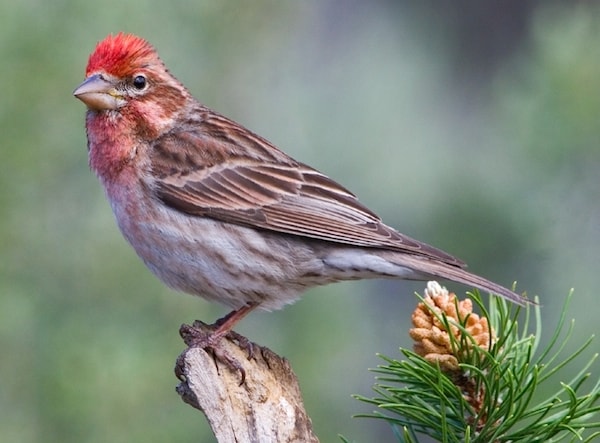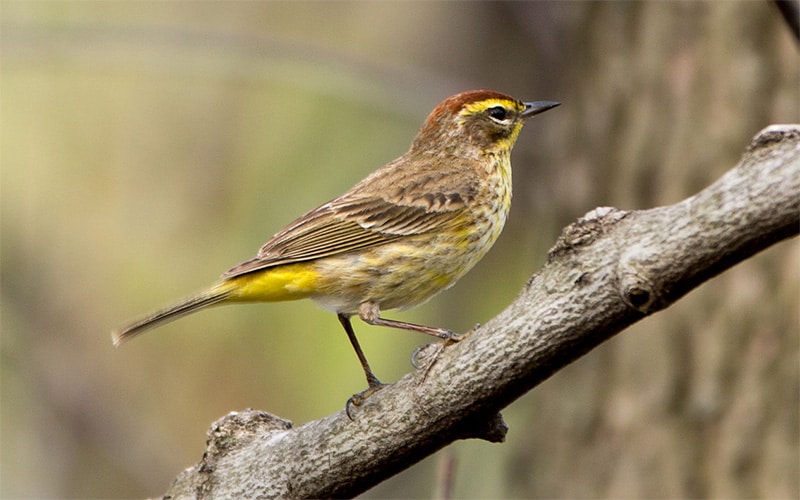A familiar and fairly large (13 inches long) woodpecker, the northern flicker is a distinctively marked bird that—unlike other woodpeckers—is often seen foraging on the ground. The northern flicker is all field marks with its bright yellow wing flashes, white rump, spotted breast, and barred back.
It is not easily confused with any other bird. In the East, both sexes have a red crescent on the back of the head, but only males show a black “moustache” mark on the cheek.
Listen for
The flicker has several calls including a single note kleer, a short wickawicka series, and a monotonous wickwickwickwick song. It also communicates by drumming on the resonating surface of a tree, pole, or even metal downspouts and chimney flues.
Find It
Widespread across North America, the northern flicker is found almost everywhere wooded habitats exist, though open woods and woodland edges are preferred. Flickers in the northern portion of the range migrate southward in winter, while southern birds are non-migratory.
Feeding Behavior
Flickers feed on the ground where they specialize in eating ants. A flicker pokes its long bill into an anthill and uses its long, sticky tongue to extract the ants. They also eat other insects, as well as fruits and seeds. At bird feeders, they will eat suet, peanuts, fruits, and sunflower bits.
Nesting Behavior
Excavating a new nest cavity almost every year, flickers perform a much-needed service for many other cavity-nesting birds—from chickadees to ducks—that use old flicker nests. Both sexes excavate the nest cavity in a dead tree or branch. The female lays between 5 and 10 eggs; both sexes share the 11-day incubation period.
Young flickers leave the nest after about 25 days. Flickers will use nest boxes with an interior floor of 7×7 inches, an interior height of 16 to 24 inches, and a 2 ½-inch entry hole. Because excavation is a vital part of courtship, boxes packed full of woodchips are more attractive. Competition for cavities from European starlings is fierce and may be causing a decline in flickers.
WOW!
Ornithologists have changed the poor flicker’s name many times over the years, from yellow-shafted, to common, back to yellow-shafted, then to northern flicker.




